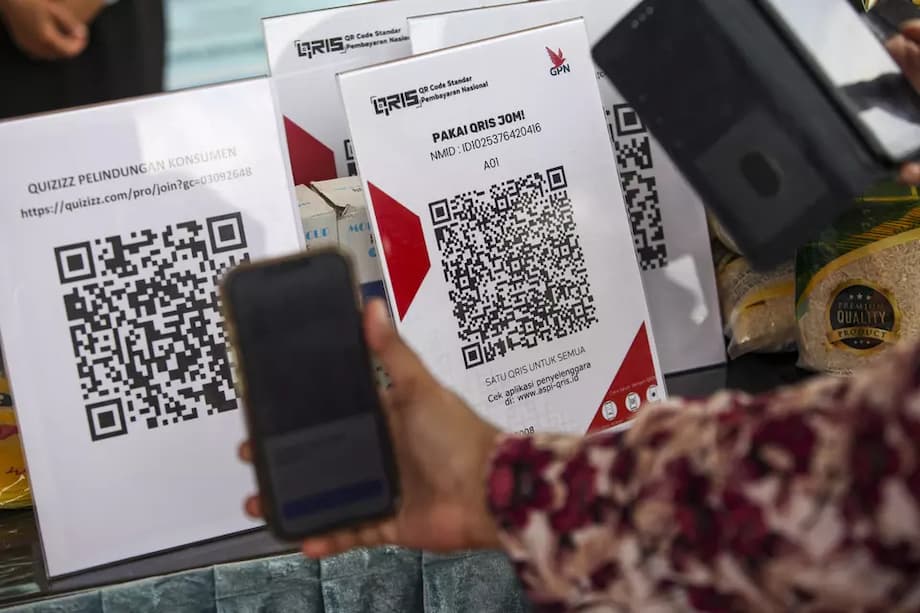Indonesia’s QRIS Payment System Goes Global: Now Accepted in Japan
Indonesia has taken a significant leap in digital financial innovation by expanding its Quick Response Indonesian Standard (QRIS) payment system to Japan. This move, officially launched on August 17, 2025—coinciding with Indonesia’s 80th Independence Day—marks a milestone in the nation’s ambition to make cashless, cross-border transactions seamless for millions of Indonesians and their trading partners abroad. The expansion not only strengthens Indonesia’s economic ties with Japan but also signals a new era for digital payments in Asia and beyond.
- Indonesia’s QRIS Payment System Goes Global: Now Accepted in Japan
- What is QRIS and Why Does It Matter?
- How Does QRIS Work in Japan?
- Why Expand QRIS Beyond Indonesia?
- QRIS: A Model for Regional Integration
- Challenges and Opportunities in Cross-Border Payments
- Impact on Indonesian Travelers and Businesses
- Broader Implications for the Digital Economy
- In Summary
What is QRIS and Why Does It Matter?
QRIS, or Quick Response Indonesian Standard, is a unified QR code payment system developed by Bank Indonesia. Launched in 2019, QRIS was designed to streamline the fragmented landscape of digital payments in Indonesia, allowing merchants and consumers to transact using a single, standardized QR code. This innovation has been a game changer for Indonesia’s digital economy, with over 57 million users adopting the system in just six years.
QRIS enables payments through a wide range of platforms, including mobile banking apps and digital wallets. Its simplicity and interoperability have made it especially popular among micro, small, and medium enterprises (MSMEs), as well as among consumers seeking convenience and security in their transactions.
How Does QRIS Work in Japan?
The expansion of QRIS to Japan is the result of a collaboration between Bank Indonesia, the Indonesian Payment System Association (ASPI), Japan’s Ministry of Economy, Trade, and Industry (METI), the Payment Japan Association (PJA), and JPQR Global operator Netstars. Initially, Indonesian travelers and businesspeople can use QRIS at 35 merchants in Japan by scanning the JPQR Global code with their domestic payment apps—be it mobile banking or e-wallets. This integration is expected to rapidly grow, with more Japanese merchants joining the network in the near future.
What makes this system particularly powerful is its two-way functionality. Not only can Indonesians pay in Japan using QRIS, but the groundwork is being laid for Japanese tourists to use their own domestic payment apps to scan QRIS codes at Indonesian merchants. This reciprocal arrangement is designed to foster greater economic cooperation and tourism between the two countries.
Technical and Regulatory Foundations
Establishing cross-border QR payments is no simple feat. It requires harmonizing technical standards, regulatory frameworks, and operational procedures between countries. The QRIS-JPQR collaboration is guided by Bank Indonesia’s Payment System 2025 Visions and aligns with the G20 Roadmap for Enhancing Cross-Border Payments. The process included extensive technical trials and sandbox testing with Japanese payment authorities to ensure security, efficiency, and interoperability.
Why Expand QRIS Beyond Indonesia?
The expansion of QRIS into Japan is part of a broader strategy to internationalize Indonesia’s digital payment infrastructure. Bank Indonesia Governor Perry Warjiyo described the move as a “significant milestone in cross-border payment system innovation.”
“QRIS has become a game changer for the digital payment ecosystem and strengthened Indonesia’s economic sovereignty,” Warjiyo said, emphasizing the importance of the system for both domestic growth and international cooperation.
By enabling Indonesians to use their familiar payment apps abroad, QRIS reduces the friction and costs associated with currency exchange and foreign payment systems. This is especially valuable for tourists, students, and business travelers, who can now make purchases in Japan as easily as they do at home.
For Japanese merchants, accepting QRIS payments opens up new opportunities to attract Indonesian tourists—a group that has been steadily increasing in number. The system also lays the groundwork for Japanese consumers to shop in Indonesia using their own digital wallets, further boosting bilateral trade and tourism.
QRIS: A Model for Regional Integration
Indonesia’s success with QRIS is not limited to Japan. The system has already been implemented in several Southeast Asian countries, including Malaysia, Thailand, and Singapore. As of June 2025, QRIS facilitated:
- 994,890 transactions worth Rp 437.54 billion (about $27 million) in Thailand since August 2022
- 4.31 million transactions worth Rp 1.15 trillion (about $71 million) in Malaysia since May 2023
- 238,216 transactions worth Rp 77.06 billion (about $4.8 million) in Singapore since November 2023
These numbers reflect the growing appetite for cross-border digital payments in the region, driven by increased travel, trade, and the rise of e-commerce. The QRIS model is now being looked at as a blueprint for other countries seeking to harmonize their payment systems and foster greater economic integration.
ASEAN-Japan Digital Payment Landscape
Japan is ASEAN’s fourth-largest trading partner, and the integration of digital payment systems like QRIS and JPQR is expected to further deepen economic ties. While Japan’s digital payment adoption has lagged behind countries like South Korea and China, usage is growing rapidly, especially with providers such as PayPay and Rakuten Pay. However, challenges remain, including interoperability issues and high merchant fees.
The tourism and e-commerce sectors stand to benefit most from integrated digital payment systems. As travel between ASEAN countries and Japan increases, seamless payment solutions like QRIS will make it easier for tourists and businesses to transact across borders. Small businesses, in particular, will benefit from reduced transaction costs and greater access to international customers.
Challenges and Opportunities in Cross-Border Payments
Despite the promise of cross-border QR payments, several challenges must be addressed:
- Technical Interoperability: Different countries have varying technical standards for QR codes and payment processing. Achieving seamless interoperability requires significant coordination and investment.
- Regulatory Alignment: Each country has its own regulatory framework for payments, data protection, and consumer rights. Harmonizing these regulations is essential for secure and efficient cross-border transactions.
- Merchant Adoption: For the system to be effective, a critical mass of merchants in both countries must accept QRIS and JPQR payments. This requires outreach, education, and sometimes incentives for merchants to upgrade their payment infrastructure.
- Consumer Trust and Security: As with any digital payment system, concerns about fraud, scams, and data privacy must be addressed through robust security measures and consumer protection policies.
Bank Indonesia and its partners have taken steps to address these challenges, including technical trials, regulatory dialogues, and the adoption of international standards such as ISO20022. The ongoing collaboration with the People’s Bank of China and UnionPay International for QRIS integration with China demonstrates Indonesia’s commitment to expanding its digital payment ecosystem globally.
Looking Beyond Japan: The Next Frontiers
The QRIS expansion to Japan is just the beginning. Bank Indonesia is actively pursuing similar collaborations with China, India, South Korea, and Saudi Arabia. Trials with China’s UnionPay International are already underway, with system development and sandbox testing involving four Indonesian switching service providers. Agreements have also been signed with India and South Korea, with technical trials set to begin soon.
These initiatives are part of a broader vision to position Indonesia as a leader in digital financial innovation, capable of shaping international standards and fostering economic cooperation across Asia and beyond.
Impact on Indonesian Travelers and Businesses
For Indonesian travelers, the ability to use QRIS in Japan means greater convenience and cost savings. No longer do they need to worry about carrying large amounts of cash or navigating unfamiliar payment systems. Instead, they can use their existing mobile banking or e-wallet apps to pay for goods and services, just as they would at home.
For Indonesian businesses, especially MSMEs, the expansion of QRIS opens up new markets and customer segments. By accepting QRIS payments from foreign tourists, businesses can tap into the growing demand for cashless transactions and attract more international customers.
Japanese merchants, too, stand to benefit from the influx of Indonesian tourists and the ease of accepting payments through a widely used and trusted system. As more merchants join the network, the value proposition for both consumers and businesses will only increase.
Broader Implications for the Digital Economy
The internationalization of QRIS is emblematic of a broader shift towards digitalization in the global economy. As countries seek to enhance financial inclusion, reduce transaction costs, and foster innovation, interoperable payment systems like QRIS are becoming increasingly important.
The ASEAN Digital Economic Framework Agreement (DEFA) aims to align policies and standards for digital trade, e-commerce, payments, digital identity, cybersecurity, and data flows across the region. The success of QRIS in integrating with payment systems in Malaysia, Thailand, Singapore, and now Japan, provides a model for other countries looking to achieve similar goals.
Expert Perspectives
Experts in digital finance and regional integration have praised Indonesia’s proactive approach. According to a recent analysis by Fulcrum.sg, establishing cross-border payment systems is complex but offers significant mutual benefits for ASEAN and its partners:
“Collaboration between ASEAN and Japan is essential to agree on commercial, governance, and technical aspects. Adoption of international standards like ISO20022 is progressing, though not yet universal in ASEAN. Trust is crucial for adoption, as concerns about scams and fraud persist. Strengthened oversight, consumer protection, digital literacy, and cybersecurity are vital.”
Bank Indonesia’s continuous development and innovation of QRIS features, coupled with its commitment to regulatory compliance and consumer protection, position the country as a regional leader in digital payments.
In Summary
- Indonesia’s QRIS payment system is now officially accepted in Japan, starting with 35 merchants and set to expand rapidly.
- The launch coincided with Indonesia’s 80th Independence Day and marks a milestone in cross-border digital payment innovation.
- QRIS enables Indonesians to pay in Japan using their domestic mobile banking and e-wallet apps, with plans for reciprocal use by Japanese tourists in Indonesia.
- The expansion is part of a broader strategy to internationalize Indonesia’s digital payment infrastructure, with similar initiatives underway in China, India, South Korea, and Saudi Arabia.
- QRIS has already demonstrated success in Southeast Asia, facilitating millions of transactions in Malaysia, Thailand, and Singapore.
- The integration of QRIS and JPQR is expected to boost tourism, trade, and economic cooperation between Indonesia and Japan.
- Challenges remain in achieving technical interoperability, regulatory alignment, and widespread merchant adoption, but ongoing collaboration and innovation are addressing these issues.
- The internationalization of QRIS reflects Indonesia’s growing influence in shaping global digital payment standards and fostering financial inclusion.












